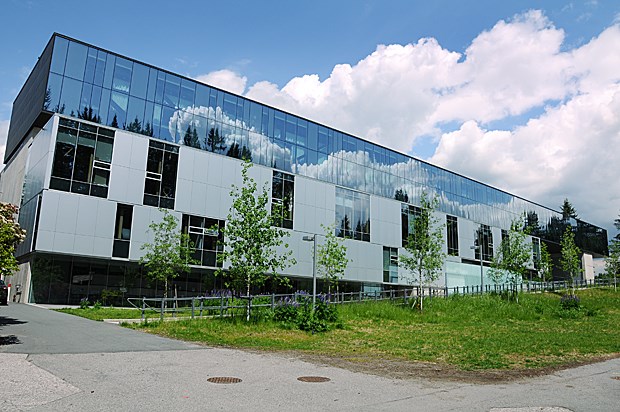Capilano University’s emissions are in remission.
After belching out more than 2,700 tonnes of carbon dioxide in 2007, the school recently announced that it has cut its greenhouse gas emission in half.
The school trimmed 1,445 tonnes of GHGs from 2007 levels through a variety of initiatives ranging from closer monitoring of paper consumption, greater reliance on electric vehicles, and better boilers.
“Those have been a big part of our savings,” said William Demopoulos, sustainability manager for the school.
The school’s library used to be heated with three big, brick boilers. At their best, the might have functioned at about 80 per cent efficiency, according to Demopoulos.
“From outward appearances, they’re perfectly functioning boilers … but internally, as they age, they’re getting less and less efficient.”
Over the year, bricks tended to tumble into the boilers, further hampering efficiency.
The school opted to replace the old boilers with 10 modulating boilers.
Instead of running between zero and “full tilt,” the new boilers allow for a constant temperature.
“You can really match the demands of the weather,” Demopoulos noted.
While the new boilers made a “big dent,” in the university’s emissions, their paper consumption also saw a towering reduction, according to Demopoulos.
“If you stacked up the reams of paper (used in 2007), it’s the equivalent of three Shangri-Las tall,” he said. “That’s a lot of paper.”
By using less paper, the university is effectively preserving trees that sequester carbon, Demopoulos said.
While using a certain amount of paper is unavoidable, the school has made strides by removing personal printers and mandating double-sided printing.
“We’ve eliminated one and a half of those Shangri-Las,” Demopoulos reported.
The university also implemented PaperCut software, a system intended to make students and faculty cognizant of how much paper they’re using.
“That slows people down, it makes them change their mentality about printing,” Demopoulos said.
While it’s important to mitigate CapU’s impact on the climate, changing the way people think may be equally important in the long run.
CapU’s 2007 emissions were “still a drop in the bucket compared to what’s going on in the globe,” Demopoulos pointed out.
Part of the goal is for the university to be an example of “our ability to mitigate climate change as a society,” he said.
The approach seems to be working as students have spearheaded a community garden and explored various environmentally friendly initiatives, according to Demopoulos.
He recalled a particular case when an outraged international student demanded to know why there was Styrofoam in the university cafeteria.
Based on that complaint, the university initiated a new position dedicated to buying more sustainable materials.
Many students are quick to offer reminders about taking the stairs instead of the elevator or turning off an unused screen.
“You can only tolerate so much pestering and eventually you’re going to turn your monitors off,” Demopoulos said with a laugh.
The mindset seems to be yielding promising results.
Typically, energy use in commercial buildings tends to grow between two and five per cent each year, according to Demopoulos.
“That doesn’t sound like much, but I can promise you that if my investments were growing five per cent per year, I’d be pretty happy,” he said.
However, despite increasing their total square footage by about 12 per cent and introducing charging stations for electric vehicles, the school has also managed to cut their electrical consumption by 10 per cent since 2007.
The school is now focused on cutting GHGs 67 per cent by 2020.
CapU is planning to host a series of events for Sustainability Week beginning next Monday.
Attendees are slated to include representatives from not-for-profit clean energy organizations, as well as Segways and electric sports cars.
Festivities begin Monday at 11 a.m. with an appearance by Suzanne Spence, the executive director with the B.C. Ministry of Environment’s climate action secretariat.



